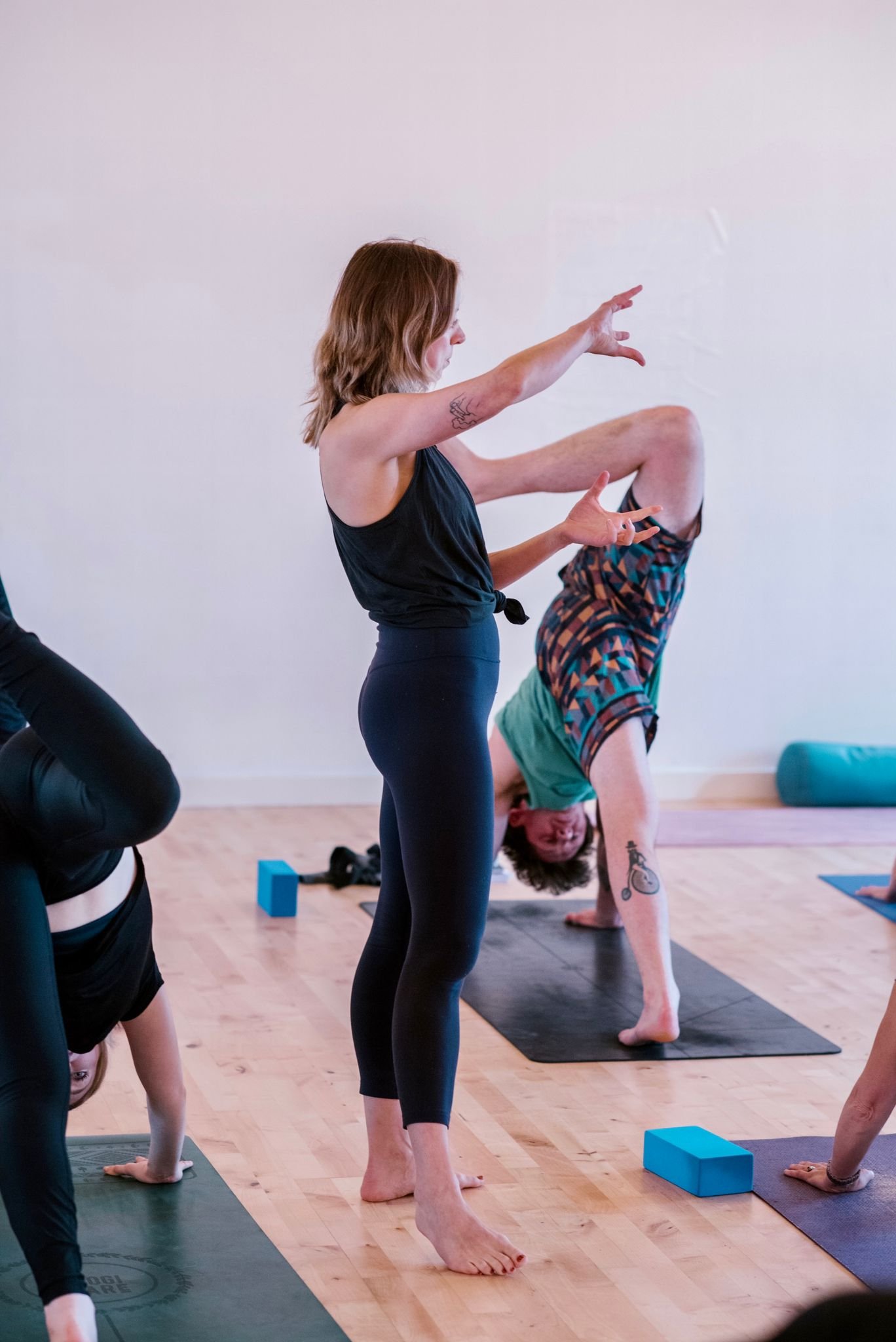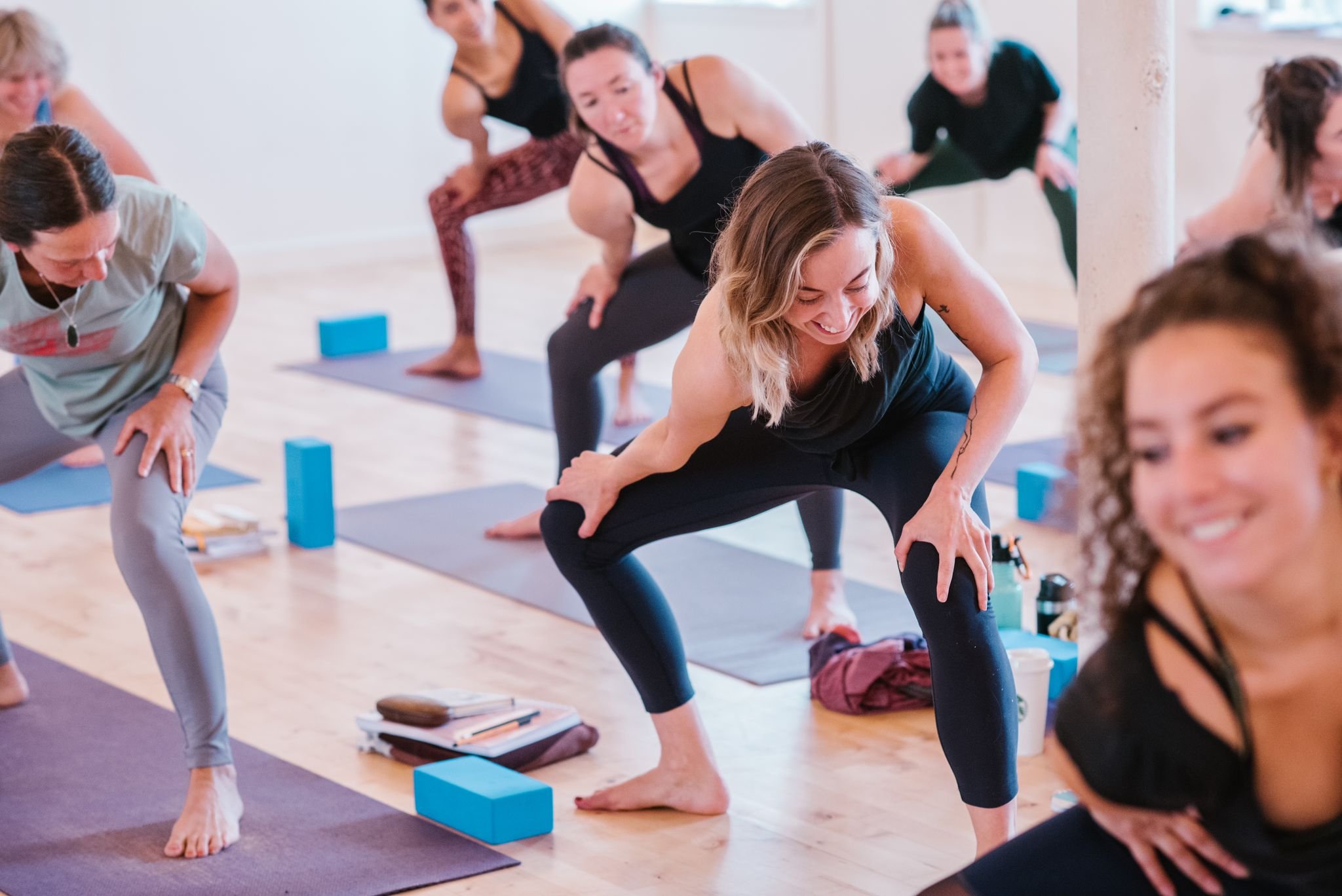Pregnant? The Kali Guide to Adapting Your Existing Practice
Below is a practical guide for ways you might want to start adapting your yoga practice at Kali if you become pregnant.
While it is a general guide, please know that there are never any absolutes or hard and fast rules — your beautiful body and pregnancy is a one off masterpiece. Our main advice will always be to trust your instinct in your yoga practice — it is way less about what you ‘can’ and ‘can’t do’, instead, ask yourself questions that you should always consider anyway: Does this feel good? Am I comfortable? How is my energy? Do I enjoy this? Can I distinguish between challenge/effort and something that maybe feels not quite right? If you can answer these questions and act accordingly then you’ll be great.
Make space
Sounds fairly obvious right, and you will start to do this naturally anyway the more pregnant you become. For example:
Feet wider than hip width in downward facing dog, or Uttanasana (standing forward fold)
Blocks underneath hands to have more space away from the floor
Open twists instead of closed twists
Step forward from downward facing dog with the foot wider or go to kneeling first then step through
Lying on your stomach will likely start to feel uncomfortable, particularly in the latter stages of your pregnancy. A cat cow, thread the needle, supported mini push ups, or a balancing table are a few of many great alternatives to your traditional vinyasa.
Stretch a little less
The hormone relaxin that is present in your body during pregnancy is responsible for increased laxity of muscles, joints and ligaments to help prepare for birth. It affects many areas of your body, not just your pelvis. While this new found range of motion may feel good, you could potentially overstretch which you don’t want. Do slightly shorter stances in your warrior poses and go about five percent less in deep passive stretches.
Can I not do yin yoga then? We would recommend other classes on our schedule instead such as gentle and vinyasa where movement is more dynamic and held for shorter periods of time
Still rock your core work and twists — but do it appropriately
If you have been told you can’t do core work during your pregnancy that is wrong. What you should avoid is the type of core work where you directly flex your spine (think the movement of sit ups and crunches) because that can put a lot of unnecessary pressure on your abdominals and the connective tissue on top (an area receiving a lot of pressure already from it stretching out). How much is too much core work? The answer to this question is relative and will change through your pregnancy. Tips:
Do your planks and side planks with knee support if you feel you need
Instead of joining in with crunches where you flex your spine, just do the rest of the movement without lifting the spine or the head. You can do this slightly elevated on a bolster if lying on your back doesn’t feel good.
Keep twisting please don't stop, just keep it active and open — your thoracic spine will thank you
Avoid Big Backbends
What defines a big backbend is relative and what feels not good will be individual and change through pregnancy. Your front side is expanding already right, so you may start to find backbends of varying degrees start to feel like too much. If that is the case, backbend less.
Inversions?
It depends. If you had a comfortable and confident inversion practice before you became pregnant and feel confident still going upside down and knowing you won’t fall then go for it. If you feel uncertain or did not have an inversion practice prior to being pregnant then we strongly don’t recommend it. Viparita Karani (legs up the wall) is a great restorative alternative. Similarly, avoid impact in class — swap jumping forwards for stepping forwards, and skip the bunny hops.
Breathe slow, low, and wide
Important for everyone, pregnant or not, but especially if pregnant. Focus on full diaphragmatic breaths in class where your breath is received in a very three dimensional way. You want your breath to meet your back ribs and side ribs, not just your chest. Use of touch where you want your breath to go can be a great tool to help you access that.
Balance a little off?
At the latter stages of your pregnancy you may find your balance goes a little. That is OK, just go near a wall if you feel like you need to. Also, If you develop any pelvic girdle pain during your pregnancy then avoid balancing on one leg e.g Utkatasana instead of Garudasana, high lunge instead of Virabhadrasana (Warrior) Three, Virabhadrasana two or Trikonasana instead of Ardha Chandrasana.
Feeling a little slower?
If you start to feel a bit slow in your yoga class then that is fine! Be a breath/asana or two behind everyone else if you need, skip something should you choose, rest when you need. Pregnancy is the most transformational change your body will ever go through, you’re creating another human being, so rest in childs pose knowing that you are actually working harder than every other non pregnant person in the room ;)
If you have any more questions then make sure to ask your wonderful knowledgeable teachers to advise you before class.

